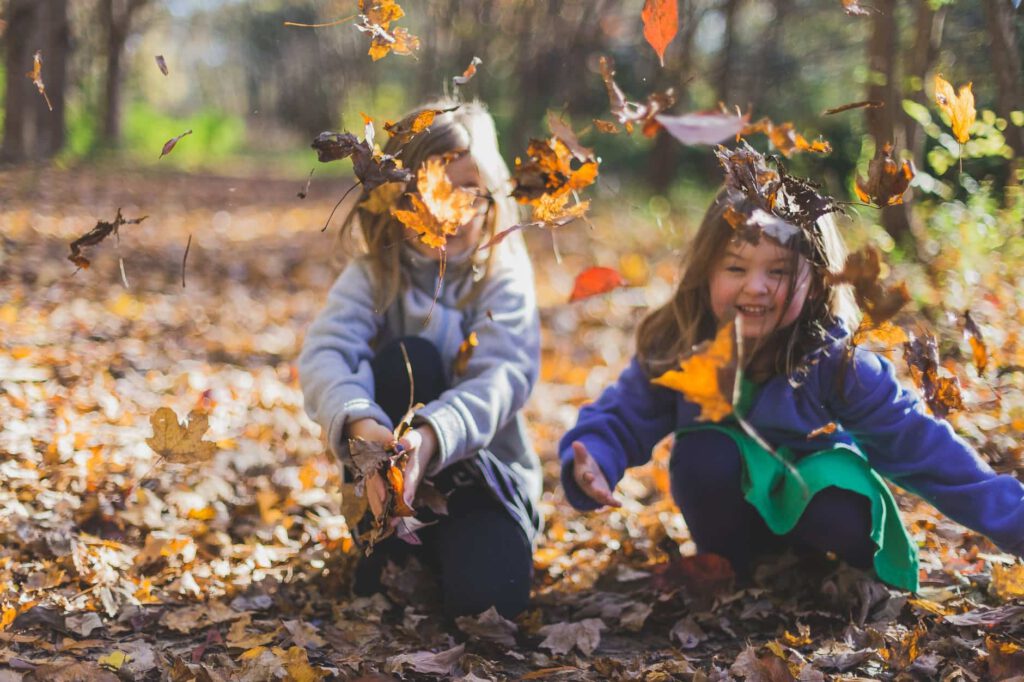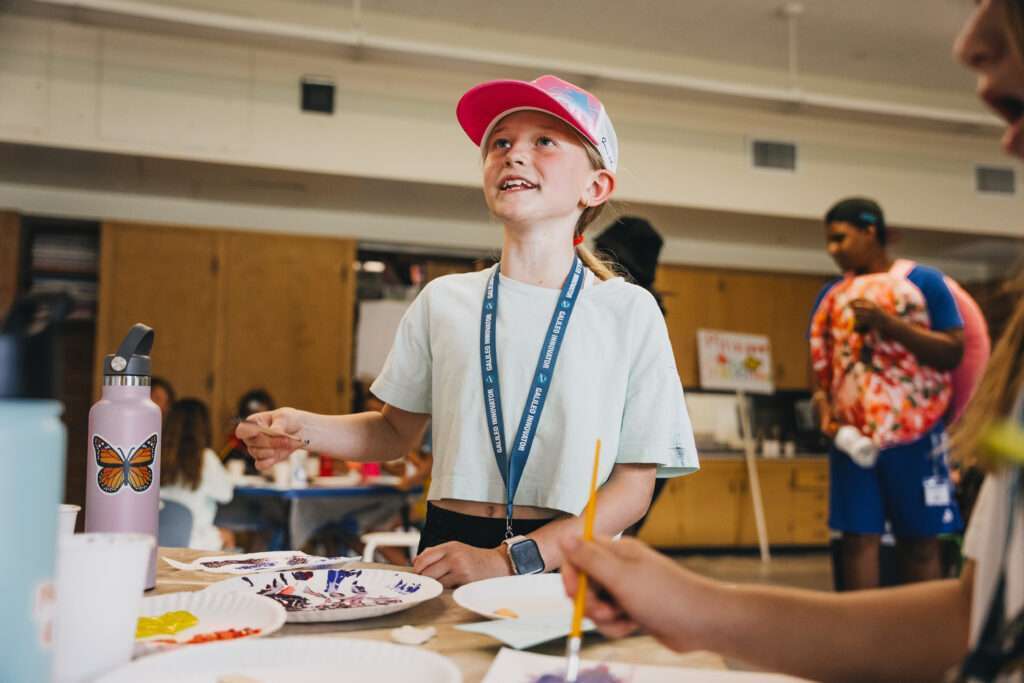Each season has its charms, and fall is no exception. The milder temperatures draw us outside to appreciate the crisp evening air and the changing colors. School is back in session, and with that also comes familiar routines, warm comfort foods, and the promise of favorite holidays.
One of the most recognizable harbingers of the season—and one from which its name is given—is the falling leaves. This scientific phenomenon is so familiar that it can be easy to overlook, but the changing leaves can provide fun fall learning activities and engaging STEAM projects that get kids outside to enjoy this special time of year.
The Science Behind Fall
As the Earth revolves, its tilt toward or away from the sun results in our changing seasons. The northern hemisphere points toward the sun in the summer and away in the winter. Spring and fall see more moderate weather as both hemispheres receive approximately the same amount of sunlight.
Deciduous (from the Latin word for “fall down” or “fall off”) trees reflect the changing seasons with spring buds growing into vibrant green leaves throughout the summer. But as the summer sun wanes and fall approaches, the decreasing sunlight and water results in less chlorophyll production. Without this bright green chemical, the leaf’s other pigments are revealed. Fall leaves display bright colors of yellow, gold, orange, and red. Once they have fallen, the leaves will dry and turn brown, and the trees will lay bare until spring.
Fall STEAM Activities Make Learning Fun
A time-tested autumn activity is raking the fallen leaves into a big pile and jumping into the bright, crunchy mound. But the falling leaves support many fun fall learning activities and STEAM projects as well that can keep elementary kids occupied until winter arrives. Engaging kids in STEAM activities that focus on science, technology, engineering, art, and math emphasize fun even as they are learning.
Read a Book Together
The cooler fall weather is a great opportunity to curl up with a mug of hot chocolate or warm apple cider to enjoy an autumn story together. Leaf Man by Lois Ehlert has charming illustrations composed of a variety of leaf shapes and it includes a leaf identification guide. Wild Child by Lynne Plourde tells a fall bedtime story of Autumn, a young wild child. Fletcher and the Falling Leaves by Julia Rawlinson explores the changes that trees experience in the fall as seen through the eyes of Fletcher the fox and hints at what is coming in the winter.
Nature Walk
A walk in the fall when colors are at their peak is the perfect time to talk about the changing season. Find out what kids know and share your favorite fall memories. Encourage kids to collect a variety of leaf shapes and colors as they walk along; see how many they can identify. Check out leaf identification guides online or via an iPhone app.
Sort and Classify
Classification is an important science processing skill. Kids can begin learning to classify early by gathering a basket of fallen leaves. Little ones can sort them by color and keep track of how many of each they find by creating a tally chart or bar graph. Older kids can sort by shape, as maple, oak, elm and other deciduous trees have characteristic leaf structures. Upper elementary kids can work with an even more complex classification system, examining fallen leaves for a variety of characteristics, including shape, margin and vein pattern.
Engineering a Solution
Enlist kids’ help with the clean up of fallen leaves, and give them an opportunity to do some creative problem-solving. Perhaps they can engineer a method for getting leaves bagged more easily. As an alternative to bagging leaves, fall is also a great time for composting, as leaves add nutrient-dense organic material to your garden beds.
Leaf Art
Leaf rubbings or prints are created by the texture of the veins on the backside of the leaves. Little ones can lay leaves with the vein side up, and cover with a sheet of paper. As the long sides of peeled crayons are rubbed across the paper with gentle pressure, the leaves’ outlines and vein structures will appear.
As an alternative, leaves can be pressed into an ink pad and leaf prints can be transferred to paper or cloth. Older kids can create colorful leaf skeletons by allowing water to decompose the soft tissues, leaving behind only the vein structure which transports water and nutrients throughout the plant.
Leaf Chromatography
Kids are often curious about the changing color of the leaves. With adult supervision and some simple supplies, older kids can conduct a paper chromatography experiment to visualize the pigments that give leaves their vibrant colors. Using leaves they have collected, jars, coffee filters and rubbing alcohol, kids can separate the color into pigment bands, including chlorophyll (green), xanthophyll (yellow) and carotene (orange). After transferring the leaf pigment to the filters, the paper will wick the alcohol as it absorbs, carrying the various pigments and depositing them in bands along the paper strip.
Finding Fun with STEAM All Year Round
Kids who enjoy fun fall learning activities will find interesting and engaging STEAM activities all year round. Each season has its own characteristics and phenomena that support exploration, creativity, and problem-solving skills.
Now is a great time to invest in some STEAM summer fun for next year. A summer camp focused on innovation will support kids’ curiosity and help them develop skills in context as they become immersed in real-world projects. With a variety of themes for elementary kids and immersive majors for middle schoolers, Galileo supports seasonal summer fun for everyone.





